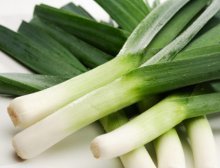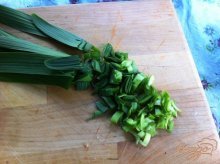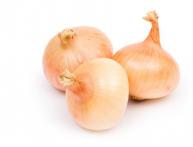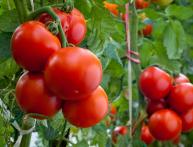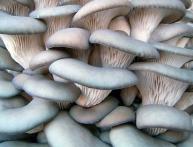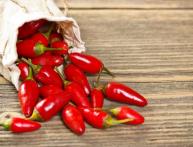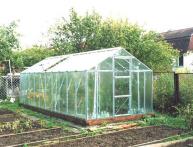Lettuce, its features and description
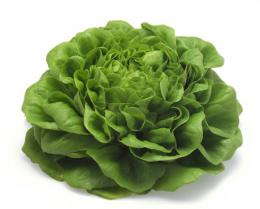
Onion - a culture familiar both in the garden and in cooking. Due to its keeping quality, turnip onions are grown and stored for future use. There are types of onions that are grown only for their greenery. Let's try to figure out what lettuce is and what place it has in the family of onion crops.
Content:
Onions, types of onions
Onions are a crop that has been used by humans for food since ancient times. Although there are currently a great variety of varieties, wild species are still eaten in some countries.
For the most part, onions are perennial or biennial plants that form a bulb. In some species the bulb is complete, while in others it may be underdeveloped.
Among the wild species it is very popular among the population. wild garlic or bear's onion, which is a species with broad leaves. Some wild onions are becoming very rare plants; for example, turf onions are even listed in the Red Book as an endangered species. All onion crops have a fairly strong specific odor. In total, more than a thousand different types of onions are known, the most popular of which are:
- onion
- shallots or Ashkelon onions
- onion or onion
- onion - slime
- chives - onion or chives
- leek or pearl onion
- branched onion or jutsai
- bear onion or wild garlic
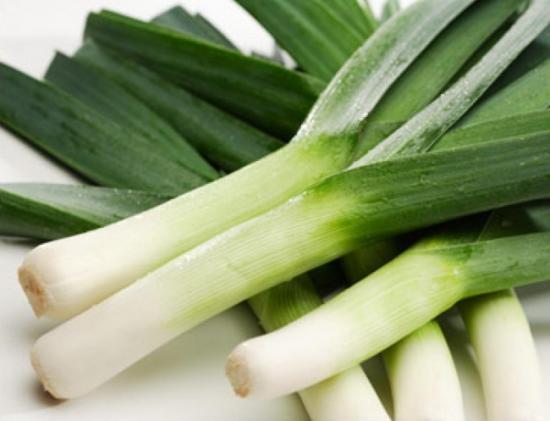
Many onions, being essentially the closest relatives of garlic, have a garlicky smell and taste.This applies not only to wild garlic, but also to jutsai onions. All types of edible onions are rich vitamins, minerals, phytoncides. Onions are consumed both fresh and after heat treatment.
In addition, many decorative varieties of onions have been bred - alliums, which are popular because of their beautiful inflorescences. No matter how much we query Yandex or search in botanical books, it is unlikely that we will be able to find a plant called onion lettuce, so we will try to figure out what is hidden under with this phrase.
Lettuce or lettuce?
When people say the convenient phrase onion, lettuce, most often they are not talking about onions, but about lettuce. Lettuce or lettuce is a genus of plants from the Asteraceae family. Since ancient times, lettuce has been used not only as food, but also as a medicinal plant, and even as a gourmet delicacy. Today, lettuce or lettuce has not lost its importance and is one of the most popular types of summer green vegetables.
Among the types of lettuce there are many weeds, but head lettuce is one of the most popular plants, with many varieties. All over the world, head lettuce is grown both on an industrial scale and in amateur beds.
The advantages of head lettuce include early ripening and cold resistance. Young seedlings tolerate short-term frosts down to - 5, and adult plants up to - 8 degrees. With prolonged exposure to low temperatures, the plant may pass the head stage and begin to bloom. Optimal temperature for growing - this is +16 + 18 degrees. At higher values, the lettuce leaves become coarser and the stemming phase begins. If you follow agricultural technology, you can begin harvesting already 45 - 60 days after sowing.
You can sow head lettuce both before winter and in early spring after the soil has thawed. Fans of this crop also sow lettuce in the summer. It is not necessary to set aside a whole bed for it; you can sow it between rows or along the edges of the beds. In terms of nutritional value and benefits, head lettuce is superior to leaf lettuce.
The following varieties of lettuce are popular today:
- Eva, early with dense heads weighing up to 500.0 g
- Grenada, early, color of heads of cabbage is gray-green, weight up to 1500.0 g
- Iceberg, medium ripening, productive, weighing up to 900.0 g
- May King or May King, medium variety, heads up to 25 cm in diameter
- Berlin yellow, the heads of cabbage are not large, loose, without bitterness
Based on all of the above, it is clear that lettuce is not an onion, but salad, but what can be meant by the name lettuce?
Lettuce or salad onion?
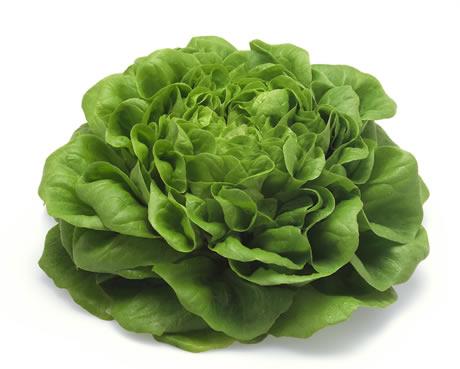
Among the many types of onions, there is a wild-growing species of grape onion or salad onion. In the wild it can be found in North Africa, Europe, and Asia. Salad onions are distinguished by flat leaves, up to one cm wide, up to 50 - 80 cm high. The bulb is ovoid, up to 4 cm in size. In culture, salad onions are better known as leeks and are widely cultivated in both Asian and European countries. America. Very popular in France.
A distinctive feature of the leek is the white leg, which is formed by the bases of the leaves and is a false bulb. Leek varieties are grown precisely because of this white part. The length of the white leg can exceed 10 - 12 cm. In earlier times, the bulb was more pronounced than in modern varieties. More often landing Leeks in temperate climates are produced through seedlings, and in the southern regions its seeds are sown directly into the ground.
It differs in that the content of vitamin C during storage practically not only does not decrease, but can also increase up to 50%. No vegetable crop has this property. What also makes leek popular is its milder and more subtle taste. In addition to cooking, leek is also used in folk medicine as a remedy that has a positive effect on the secretory functioning of the gastrointestinal tract, as well as for increased body weight, rheumatism, and joint diseases.
The following varieties can be recommended for cultivation:
- Autumn giant, late, ripening up to 200 days, semi-sharp, with medicinal properties
- Bandit, late, ripening up to 150 days, with a short juicy white leg
- Elephant, medium, with a massive white part, suitable for winter storage
Despite the fact that lettuce or leeks are successfully disguised as lettuce, it’s probably worth growing both lettuce and onions in the garden.leekto provide yourself with vitamins both in summer and winter.
Growing lettuce on video:

